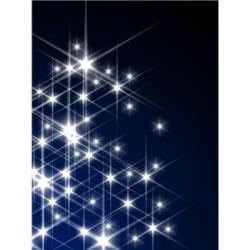Source Institutions
Source Institutions
Add to list Go to activity
Activity link broken? See if it's at the internet archive

In this activity, learners set up an experiment to investigate the effects of hot air on the path of a laser beam. They observe the wandering position of the laser beam spot on the wall after the light travels through hot air rising from the candle flame. Learners produce a table of observations from both the Cool Air and Hot Air experiments, and answer questions using evidence from their experiment. Apply what learners discover in this experiment to real-life by discussing why stars "twinkle."
- 5 to 10 minutes
- 45 to 60 minutes
- $1 - $5 per group of students
- Ages 14 - 18
- Activity, Experiment/Lab Activity, Lesson/Lesson Plan
- English
Quick Guide
Materials List (per group of students)
- Candle holder (modeling clay, or sticky adhesive putty)
- Candle (birthday cake size) and matches or lighter
- Laser pointer
- Binder clip
- Graph paper (8.5 x 11 inches with 1/4 inch grid size)
- Masking tape
- Cup (8 to 12 inches high) preferably non-flammable
- Meter stick
Subjects
-
Earth and Space Science
-
Astronomy
- Stars and Galaxies
- Probes, Satellites and Spacecraft
-
Earth Structure
- Atmosphere
-
Astronomy
-
Physical Sciences
-
Heat and Thermodynamics
- Heat and Temperature
-
Light and Optics
- Lasers
- Reflection and Refraction
-
Structure and Properties of Matter
- Volume and Density
-
Heat and Thermodynamics
-
Engineering and Technology
-
Engineering
- Aerospace Engineering
-
Engineering
-
Life Sciences
-
Human Senses and Perception
- Vision
- Perception
-
Human Senses and Perception
-
Mathematics
-
Data Analysis and Probability
- Data Analysis
- Data Collection
- Data Representation
-
Data Analysis and Probability
-
The Nature of Science
-
The Scientific Process
- Conducting Investigations
- Gathering Data
- Formulating Explanations
- Communicating Results
-
The Scientific Process
Audience
To use this activity, learners need to:
- see
- read
- touch
Learning styles supported:
- Involves teamwork and communication skills
- Involves hands-on or lab activities
Other
Components that are part of this resource:
Includes alignment to state and/or national standards:
Includes assesments for student learning:
This resource is part of:
Access Rights:
- Free access
By:
- The University of Texas McDonald Observatory
Rights:
- All rights reserved, The University of Texas McDonald Observatory, 2011
